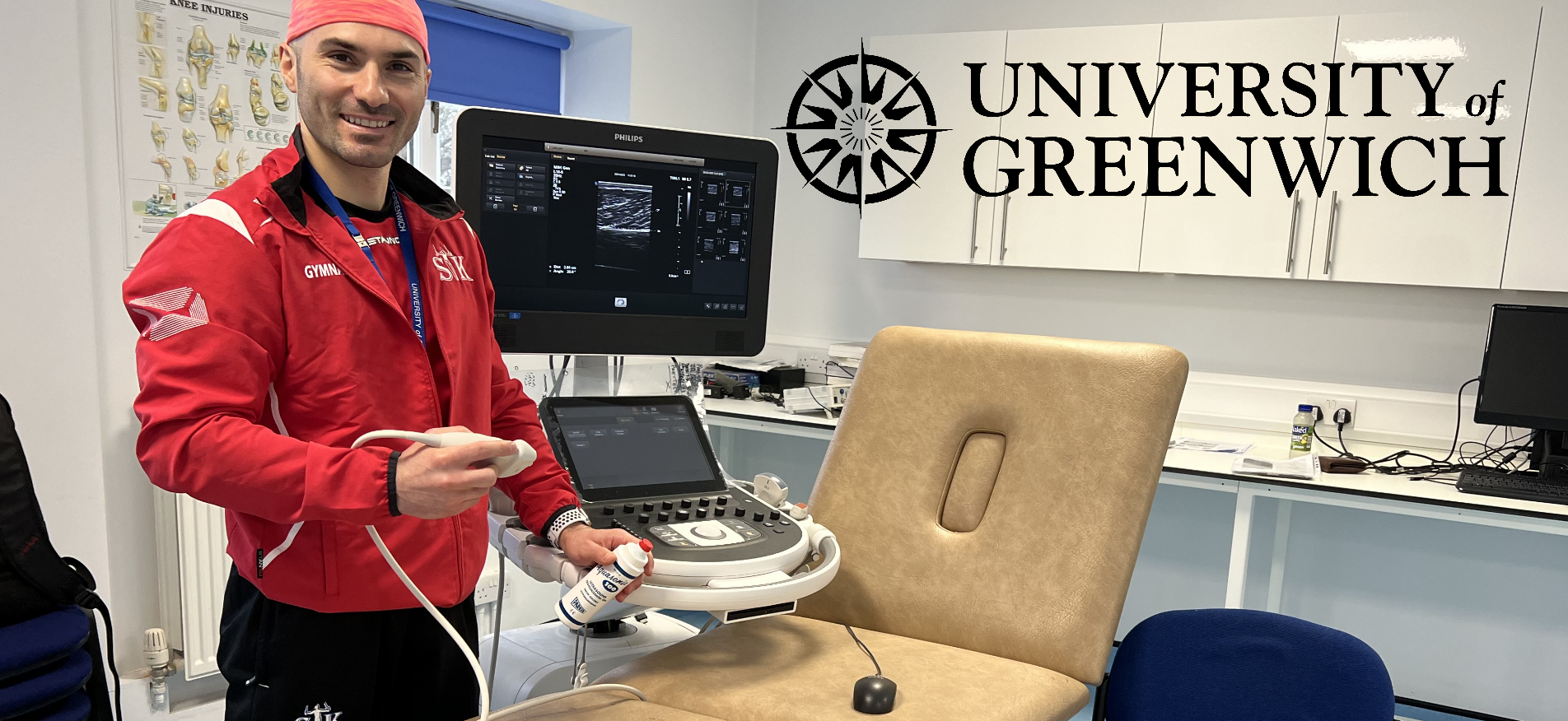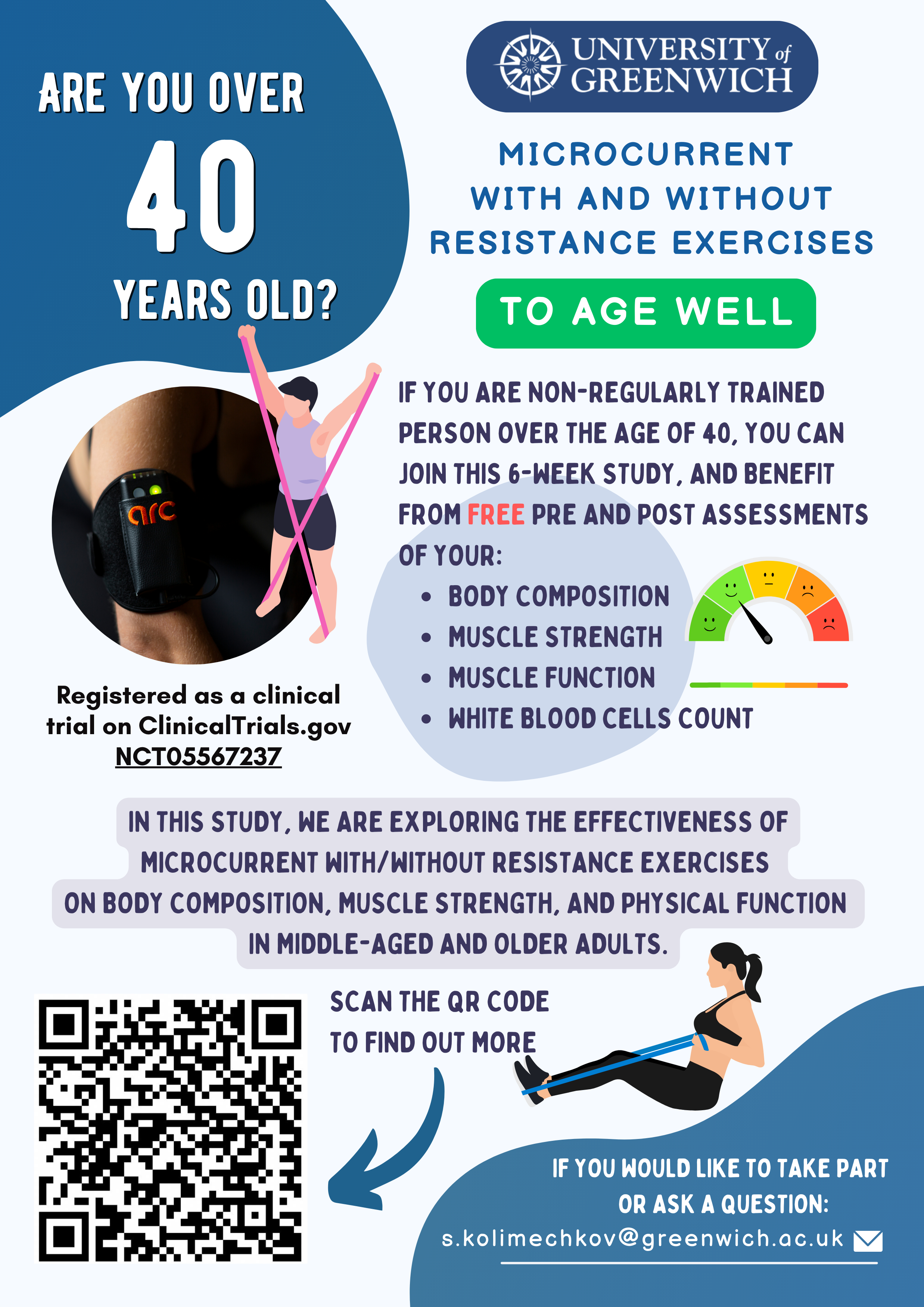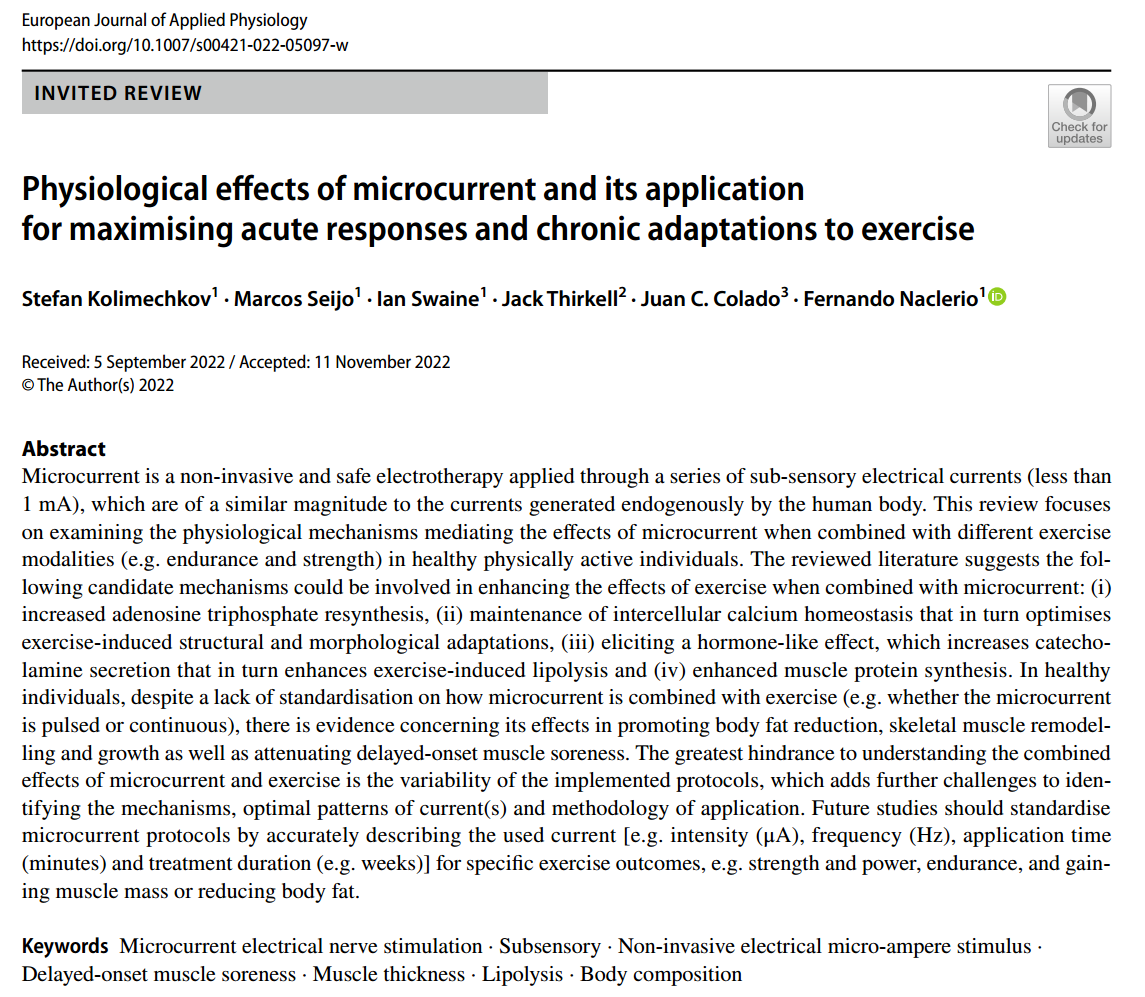Microcurrent & Exercise Programme
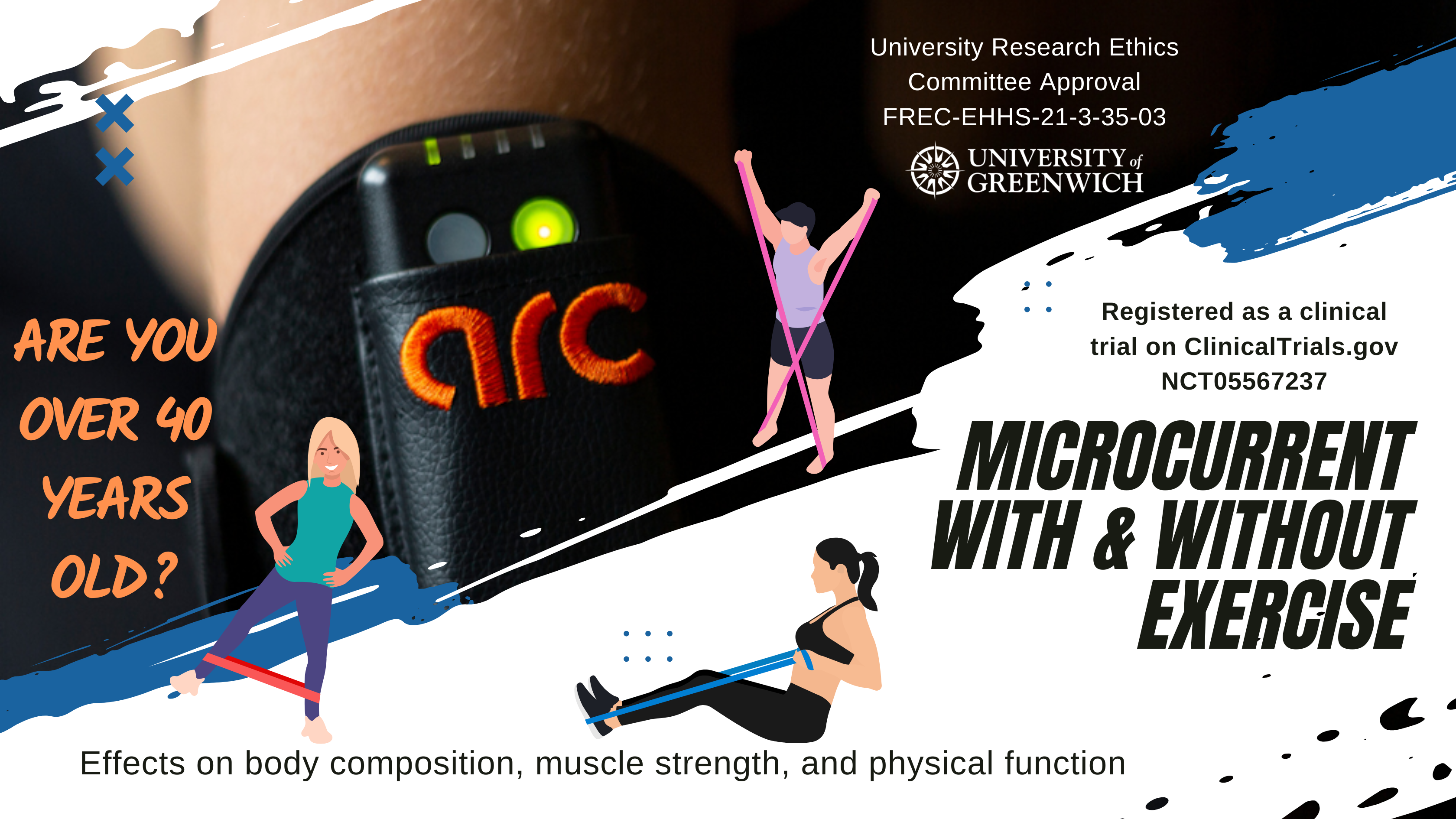
Welcome to this specially created page to provide you with the information for an ongoing research project in which you can take part for free. This project is led by Dr Stefan Kolimechkov, and supervised by Professor Fernando Naclerio, and Dr Marcos Seijo at the Centre of Exercise Activity and Rehabilitation, ILD, University of Greenwich, London.
Microcurrent with and without resistance exercise to age well
In this video, Dr Stefan will tell you more about this exciting project, for non-regularly trained participants over the age of 40, in which you can take part for free. Stefan is currently undertaking a second PhD on the effects of microcurrent and resistance exercises on body composition, muscle strength, and function in middle-aged and older adults. He is a postgraduate research student at the School of Human Sciences at the University of Greenwich.
This study has a University Research Ethics Committee Approval (FREC-EHHS-21-3-35-03), and it is registered as a clinical trial on ClinicalTrials.gov (NCT05567237).
Who Can Take Part in this Programme?
- non-regularly trained adults (people who do not engage regularly in resistance training sessions);
- men and women over the age of 40.
Overview
Can we slow down ageing? Aging is associated with the involuntary loss of muscle mass, which is named sarcopenia. This age-related decline in muscle mass is accompanied by loss of muscle strength and muscle function, which reduces our ability to perform simple tasks of daily living like jogging or being actively involved in our hobbies. It has been well documented that after the age of 30, muscle mass decreases with around 3 to 8% per decade and even at a higher rate after the age of 60. This involuntary loss of muscle mass, accompanied by decline in muscle strength and function is one of the main causes of disability in middle-aged and older adults. With increased age, sarcopenia leads to loss of independence and the need for long-term care. Therefore, it is of high importance to look for effective treatments for slowing the age-related decline of muscle mass, strength and function. The hallmark of prevention and counteracting sarcopenia (the involuntary loss of muscle mass and strength) is resistance exercise. Emerging evidence suggest that a potential method for interacting with the signs of sarcopenia is the application of microcurrent.
In this study, we would like to analyse the effects of microcurrent treatment alone, and combined with a resistance exercise programme, as a potential treatments to effectively combat sarcopenia and improve health and wellbeing in adults over the age of 40.
What is Microcurrent?
Resistance exercise can improve our overall health and slow down the age-related effects of sarcopenia. However, not so much is known about microcurrent. So, what is microcurrent and how that might help your health and contribute toward successful ageing?
Microcurrent devices produce very low-level electrical currents into your body through two electrode pads applied to the skin. The current is perfectly safe and it can’t be felt at all because it is sub-sensory. So, yes, you will not feel anything while using microcurrent. It is similar in strength to our body’s own natural bio-currents, and it has been used in beauty centres, physiotherapy and osteopathy clinics in the UK and around the world. Microcurrent is also referred as microcurrent electrical nerve stimulation (MENS), microcurrent electrical therapy, low-intensity direct current, and low voltage micro-amperage stimulation. Research showed that microcurrent can increase ATP (boost the energy levels), help the body reduce inflammation and pain while increasing its own natural tissue repair and regeneration mechanisms. At the end of 2022, Dr Stefan and his supervisors at the University of Greenwich published a paper on the mechanistic effects of microcurrent applied with exercise. This article was published in one of the most prestigious journals in our field, the European journal of applied physiology. You can read this article and find out more about microcurrent.
What are your benefits if you take part?
If you decide to take part in this 6-week programme, you will benefit from using a new microcurrent device for free during the study (note that you might be allocated a real or sham device due to the double-blind nature of the study). This device normally costs around £250.
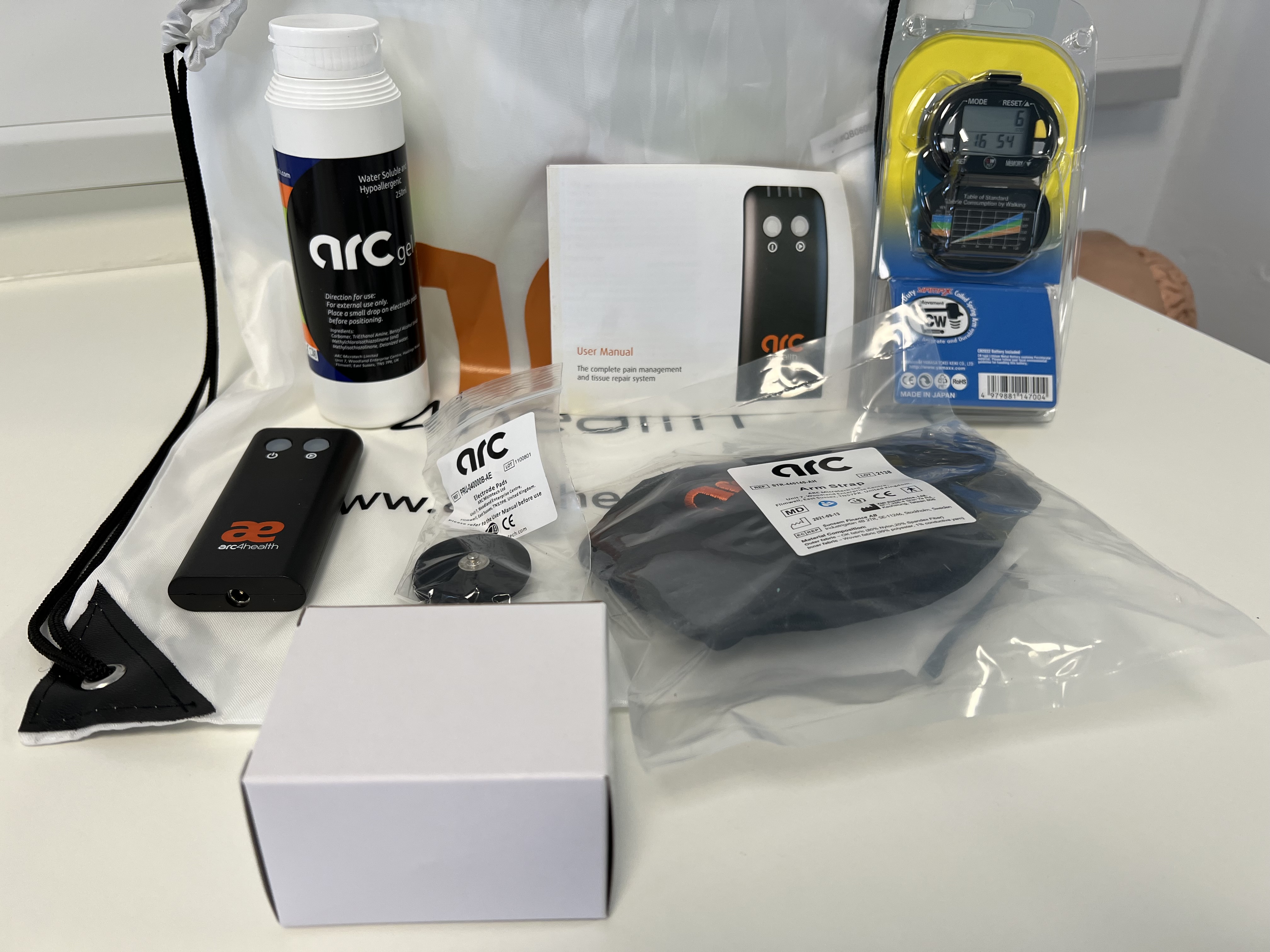
If you choose to engage in exercise, you will receive specialised home-based training programme (including paper format programme and a fully pre-recorded video to follow while doing your sessions at home) with elastic bands + a familiarization session with a qualified coach at the University of Greenwich.

In the following video, you will learn more about the resistance exercises in this programme.
Regardless of whether you choose to follow the exercise programme or not to enageg in exercise, you will be able to see any changes in your body composition and muscle function during the 2 measurement sessions in the labs at the University of Greenwich (before and after the study). This will be done at our Avery Hill Campus: Sparrows Ln, Eltham SE9 2BP.
- You will receive a free Microcurrent device during the 6-week study with an option to continue using it for 12 weeks (normally costs £250 but participants use it for free);
- You will receive a free Pedometer during the study period (normally costs £20 but participants will have it for free) to track your physical activity;
- You will receive a specialised home-based resistance training programme with elastic bands + a familiarization session on campus to learn how to do the exercises correctly (for those who decide to engage with exercise);
- 2 precise measurements (before and after the study) of your weight, height, fat mass, and free-fat mass in the lab (normally costs £40 per assessment in a GP clinic but participants in the study have it for free);
- White blood cells count in the lab. It measures the number of white cells in your blood by using a tiny droplet of blood from your finger;
- Measurement of the thickness of 2 muscles on your arms and legs by using ultrasound in the lab (normally costs £100 but participants will have it for free);
- Measurement of your muscle strength and muscle function in the lab.
- Full report with all results of your body composition and strength parameters assessment at the end of the study.
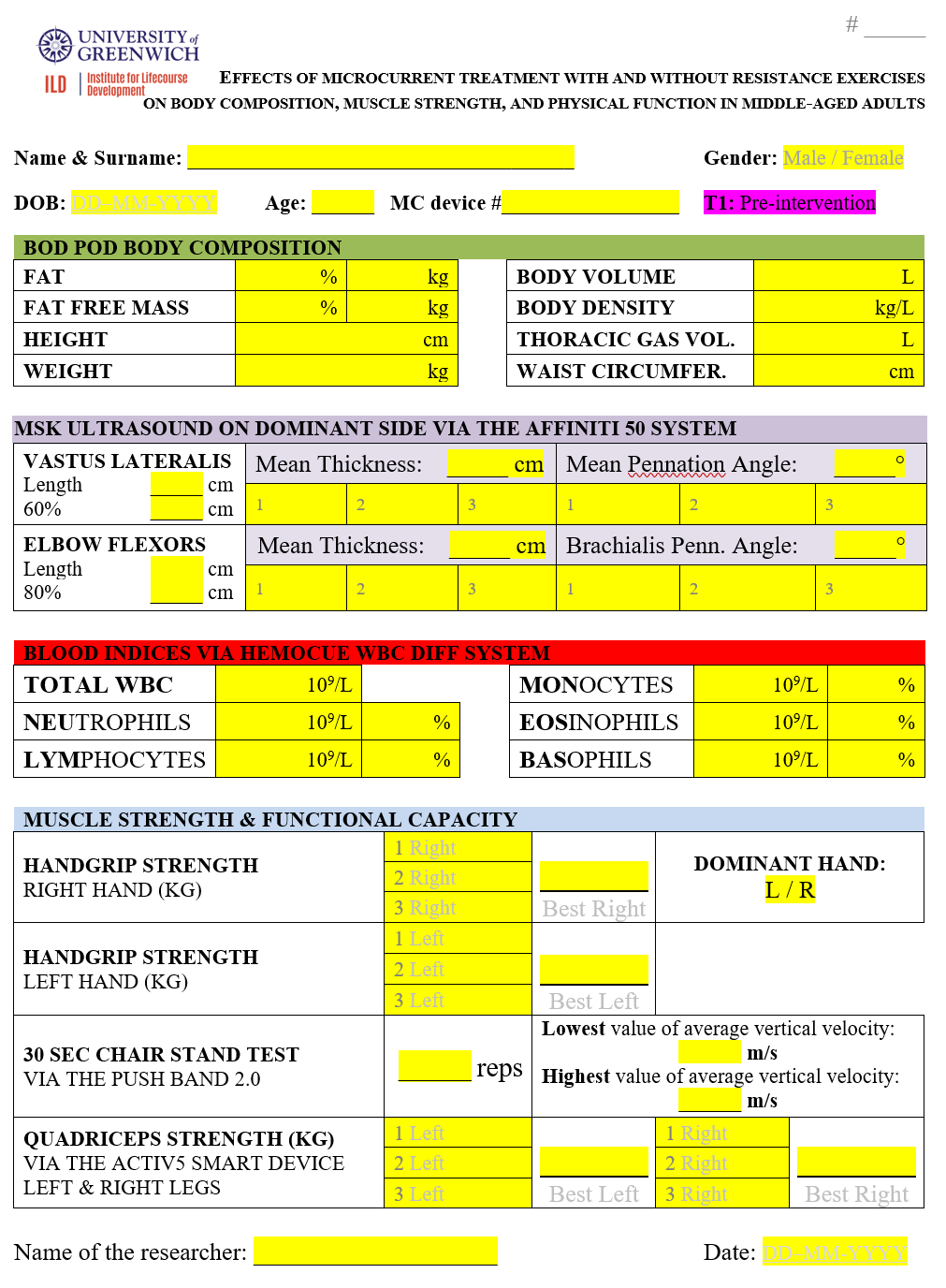
Participant Information Sheet can be read here.
PLEASE SHARE THIS INFORMATION WITH SOMEONE WHO MIGHT BE INTERESTED
